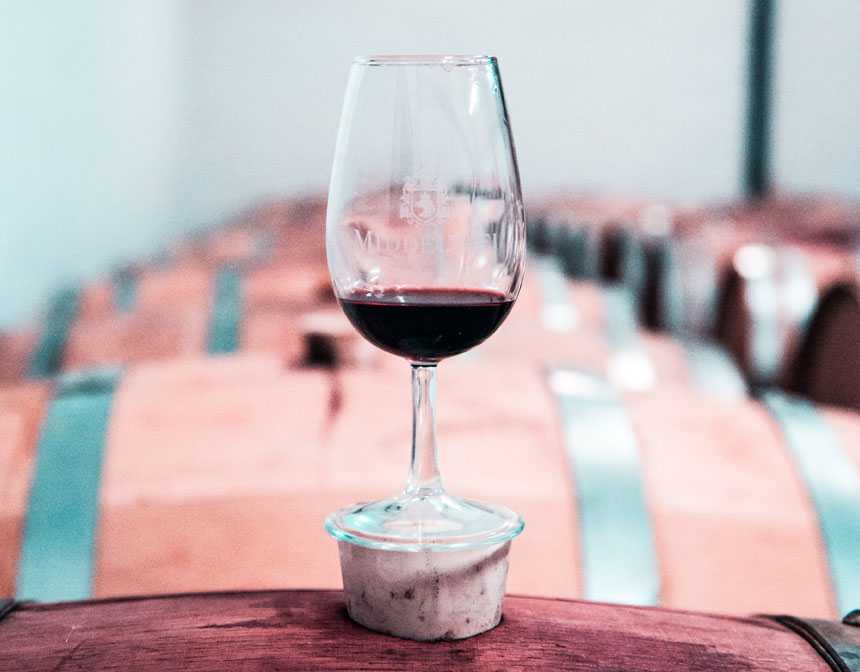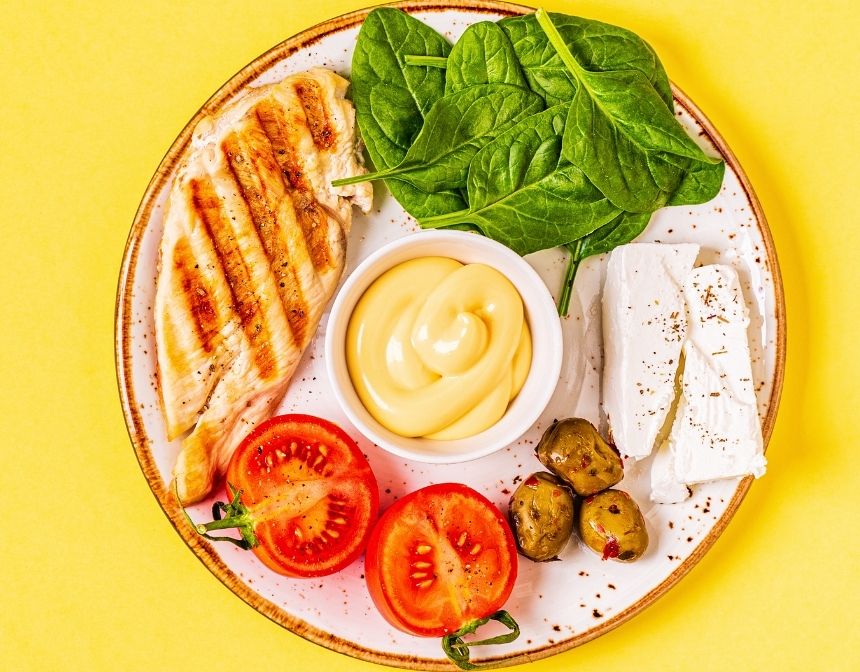What Are Baked Beans?
Baked beans are a classic dish made with cooked beans that are simmered or baked in a flavorful sauce. They are popular in many cuisines, with variations found in American, British, and Caribbean cooking, among others. The traditional base for baked beans is typically navy beans, but other types of beans like pinto or kidney beans can also be used.
The sauce for baked beans typically includes ingredients such as molasses, brown sugar, mustard, ketchup, Worcestershire sauce, and sometimes bacon or salted pork for added flavor. The combination of these ingredients creates a sweet, tangy, and savory profile that is characteristic of baked beans.
The dish gets its name from the method of preparation, where the beans are slow-cooked or baked for an extended period of time. This slow cooking allows the flavors to meld together and the sauce to thicken, resulting in a rich and comforting dish.
Baked beans are often served as a side dish at barbecues, picnics, and cookouts, or as a hearty component of a full breakfast. They can also be used as a topping for hot dogs or incorporated into other recipes like casseroles or bean-based soups.
Whether enjoyed on their own or as part of a larger meal, baked beans offer a satisfying and flavorful addition to any table.
What Type Of Beans Are Baked Beans?
The most commonly used type of bean for making baked beans is navy beans. Navy beans are small, oval-shaped beans with a mild flavor and a creamy texture when cooked. They have a slight sweetness that pairs well with the savory and tangy flavors of the sauce used in baked beans.
However, other types of beans can also be used to make baked beans, depending on regional preferences or personal taste. For example, pinto beans or kidney beans are sometimes used as alternatives to navy beans in baked bean recipes. These beans have a slightly different texture and flavor profile but still work well in creating a delicious dish.
Ultimately, the choice of beans for baked beans depends on personal preference and availability. Feel free to experiment with different types of beans to create your own unique twist on this classic dish.
Are Baked Beans Good For You?
Baked beans can be a nutritious addition to a balanced diet when prepared with wholesome ingredients and consumed in moderation. Here are some reasons why baked beans can be good for you:
Excellent Source of Fiber: Baked beans, typically made with beans like navy beans, provide a substantial amount of dietary fiber. Fiber is essential for digestive health, helps regulate blood sugar levels, promotes satiety, and supports overall heart health.
Plant-Based Protein: Beans are an excellent plant-based source of protein, making baked beans a valuable option for vegetarians and vegans. Protein is crucial for building and repairing tissues, supporting immune function, and maintaining healthy muscles and bones.
Nutrient-Rich: Baked beans are packed with nutrients. They contain essential minerals such as iron, magnesium, potassium, and folate. These nutrients are important for various bodily functions, including oxygen transport, nerve function, and cell division.
Low in Fat: Baked beans, especially when prepared without added fats, are generally low in saturated fat and cholesterol. They can be a healthier alternative to some other protein sources that are higher in saturated fat.
Antioxidant Content: Beans, including those used in baked beans, are rich in antioxidants, which help protect the body against oxidative stress and inflammation. Antioxidants contribute to overall health and may help reduce the risk of chronic diseases.
The nutritional profile of dried beans may vary depending on the particular recipe and method of preparation. Boiled canned beans can contain added sugars and sodium, so it's recommended to check the label and opt for low sodium or reduced sugar options whenever possible. Additionally, portion control is the key to reaping the benefits of dried beans without consuming excessive calories or sodium.
How Do You Make Baked Beans From Scratch?
To make baked beans from scratch, start by soaking dried navy beans overnight. Drain and rinse the beans, then sauté onions and garlic in a pot. Add the beans, along with ketchup, molasses, brown sugar, Dijon mustard, Worcestershire sauce, smoked paprika, salt, pepper, vegetable broth, and bay leaves. Optionally, you can add cooked and crumbled bacon for added flavor. Bake the beans in the oven at 325 °F (163 °C) for 2.5 to 3 hours, or until the beans are tender and the sauce has thickened. Remove the bay leaves before serving.
How Long Do You Cook Baked Beans?
Baked beans are typically cooked in the oven for 2.5 to 3 hours at 325°F (163°C). This cooking time allows the flavors to develop and the beans to become tender. However, the cooking time may vary depending on the desired consistency and your oven, so it's recommended to check the beans periodically and adjust the cooking time as needed.
Can You Make Baked Beans Without Bacon?
Yes, you can make baked beans without bacon. Simply omit the cooked and crumbled bacon from the recipe. The remaining ingredients, such as onions, garlic, ketchup, molasses, brown sugar, mustard, Worcestershire sauce, and spices, will still create a flavorful dish. You can also enhance the flavor by adding other ingredients like diced bell peppers or jalapeños.
Can Baked Beans Be Made Vegetarian?
Yes, baked beans can be made vegetarian by omitting the bacon and using vegetable broth instead of water. The rest of the ingredients, including onions, garlic, ketchup, molasses, brown sugar, mustard, Worcestershire sauce, and spices, can be used to create a delicious vegetarian version of baked beans. Adjust the seasoning according to your taste preferences and enjoy a vegetarian-friendly dish.
What To Serve with Baked Beans?
Baked beans are a versatile and comforting dish that pairs well with a range of complementary foods. When serving baked beans, consider including some delicious accompaniments to create a well-rounded and satisfying meal. For a classic combination, serve them alongside grilled meats like burgers, hot dogs, or barbecue chicken for a hearty and flavorful feast. Add a side of fluffy cornbread to enjoy the sweet and crumbly texture that beautifully complements the savory flavors of the beans. For a fresh and crisp element, consider including a refreshing coleslaw or a vibrant salad. The contrasting textures and flavors of the crunchy vegetables or crisp greens provide a nice balance to the rich and hearty baked beans. Additionally, grilled vegetables like zucchini, bell peppers, or corn on the cob can add a smoky touch and enhance the overall experience. Whether you're enjoying a backyard barbecue or a cozy family meal, these suggested sides will elevate the enjoyment of your baked beans and create a satisfying and memorable dining experience.
Here are our delicious recipes that you can serve with Baked Beans:
Can You Freeze Baked Beans?
Yes, baked beans with gravy can be frozen for later use. Freezing cooked beans is a convenient way to store leftovers or prepare a larger batch ahead of time. Here's how to freeze dried beans:
- Allow the cooked beans to cool completely before freezing.
- Place in an airtight container or freezer-safe bag to store cooked beans.
- Dried beans can typically be stored in the freezer for up to 3-4 months. However, it is recommended to be consumed within the first 1-2 months for the best taste and texture.
- When you're ready to use frozen baked beans, thaw them in the refrigerator overnight. Once thawed, you can reheat it on the stovetop, in the oven, or in the microwave, depending on your preference.
The texture of the beans may change slightly after freezing and reheating. The sauce may thicken and the beans may be a little softer. However, the flavor and overall quality should still be enjoyable.
History of Baked Beans
Baked beans are a classic American dish with a rich history. The origin of baked beans can be traced back to Native American and Colonial times. Native Americans cultivated beans and cooked them with various ingredients, such as maple syrup and bear fat. When European settlers arrived, they adopted this cooking method and made it their own. Baked beans became a staple in New England cuisine, particularly in states like Massachusetts and Maine.
The traditional recipe for baked beans typically features navy beans, which are slow-cooked with a sweet and savory sauce. The sauce is often made with ingredients like ketchup, molasses, brown sugar, mustard, and Worcestershire sauce. The beans are baked in the oven for several hours, allowing the flavors to meld together and the sauce to thicken.
Baked beans are loved for their comforting and hearty qualities. They are often enjoyed as a side dish at summer barbecues, picnics, and potlucks. Baked beans can also be served as a main course, accompanied by crusty bread or cornbread. The leftovers can be stored and reheated for future meals, making them a convenient and versatile dish.
In addition to their delicious taste, baked beans offer nutritional benefits. They are a good source of plant-based protein, fiber, and essential minerals like iron and magnesium. However, it's worth noting that the addition of ingredients like brown sugar and molasses adds sweetness and calories to the dish. If you're looking for a healthier alternative, you can reduce the amount of sugar or choose natural sweeteners like maple syrup.
Whether enjoyed as a side dish or a main course, baked beans bring comfort and flavor to any meal. With their roots in American history and their timeless appeal, they continue to be a beloved dish in households across the country. Try making your own batch of homemade baked beans and savor the rich flavors and aromas that have made this dish a classic favorite for generations.















































